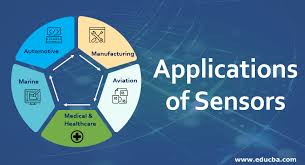Introduction
Advanced sensors and sensor systems are crucial technologies that enable real-time data collection, analysis, and response across various industries, including defense, healthcare, autonomous vehicles, and space exploration. These systems integrate multiple sensing technologies, such as infrared, radar, LiDAR, and biosensors, to enhance situational awareness, improve automation, and enable predictive analytics. Their development is driven by advancements in artificial intelligence (AI), nanotechnology, and wireless communication, making them more precise, efficient, and adaptable.
Types of Advanced Sensors and Their Applications
- Electro-Optical and Infrared (EO/IR) Sensors – These sensors detect and analyze light and heat signatures, making them essential for military reconnaissance, surveillance, and night vision systems. They are also used in space telescopes and satellite imaging.
- Radar and LiDAR Sensors – Radar systems use radio waves, while LiDAR employs laser pulses to detect objects, measure distances, and create 3D maps. These are critical for autonomous vehicles, air traffic control, and defense missile guidance systems.
- Biosensors – Designed for medical and environmental applications, biosensors detect biological molecules, pathogens, or chemical changes. They play a key role in disease diagnostics, wearable health monitoring, and food safety.
- Acoustic and Sonar Sensors – Used primarily in underwater navigation and surveillance, sonar sensors help submarines, unmanned underwater vehicles (UUVs), and marine exploration missions detect obstacles and marine life.
- Quantum Sensors – Leveraging the principles of quantum mechanics, these sensors achieve ultra-high precision in measurements related to gravity, time, and magnetic fields. They hold potential for future applications in navigation, underground mapping, and secure communication.

Advantages of Advanced Sensor Systems
- Enhanced Accuracy and Precision: Advanced sensors provide highly accurate data collection, reducing errors in decision-making and automation.
- Real-Time Monitoring and Response: Many modern sensor systems are designed for immediate data processing and reaction, critical for applications like missile defense and self-driving cars.
- Increased Automation and Efficiency: These sensors enable automation in industries such as manufacturing, agriculture, and healthcare, improving productivity and safety.
- Multi-Modal Integration: Combining different sensor types (e.g., radar + LiDAR + AI) enhances reliability and situational awareness across complex environments.
Challenges and Considerations
- Power Consumption: Many high-performance sensors require significant energy, making power efficiency a key challenge in their deployment.
- Data Overload and Processing: The large volume of real-time data generated by sensor networks necessitates advanced AI-driven analytics for meaningful insights.
- Cost and Scalability: Cutting-edge sensors, particularly quantum and high-resolution imaging systems, remain expensive and require further miniaturization for widespread adoption.
- Security and Cyber Threats: As sensor systems become interconnected, ensuring their cybersecurity is crucial to prevent data breaches or system manipulations.
Future of Advanced Sensors
Emerging trends in advanced sensors include the integration of AI-driven sensor fusion, smart dust (microscopic wireless sensors), and self-powered nano-sensors capable of operating in extreme environments. Future advancements will make sensor systems even more intelligent, autonomous, and energy-efficient, revolutionizing fields such as defense, space exploration, and personalized healthcare.

